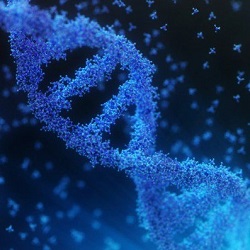
The remarkable performance of biological light-harvesting complexes has prompted a multidisciplinary interest in engineering biologically inspired antenna systems as a possible route to novel solar cell technologies.
Analogous to origami, the Japanese art of paper folding, DNA can be folded into complex shapes via molecular self-assembly. This novel technique, known as ‘DNA origami’, has enabled the creation of sophisticated DNA nanostructures with precise control over size, shape and chemical functionality. This makes it an elegant technique to mimic some of the exquisite nano-engineering of biological light-harvesting complexes and explore the optimal co-ordination of pigments in efficient antennas.
We have recently designed an artificial, programmable antenna system on a DNA origami platform. Creating a library of over 40 assembled antenna structures, we systematically analysed the light-harvesting efficiency with respect to the geometry and number of “donor” pigments that can capture and transfer photonic energy to an “acceptor” pigment. This new origami platform is extremely reliable and provides a robust, programmable substrate for implementing advanced nanoscale antenna design concepts.
Department of Biochemistry

